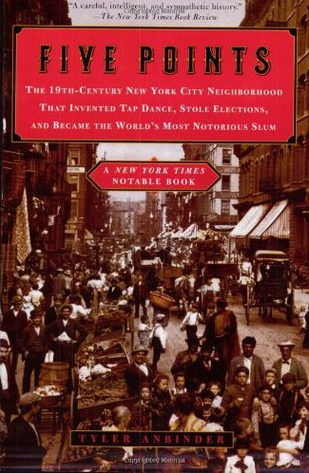Chicago’s Great Fire The Destruction and Resurrection of an Iconic American City by Carl Smith
My rating: 4 of 5 stars

Carl Smith’s upcoming Chicago’s Great Fire: The Destruction and Resurrection of an Iconic American City is an exhaustively researched and skilfully woven tale of one of the most popular conflagrations of recent history. In this volume, Smith demonstrates an attention to detail that conveys the individual stories of a wide swath of the citizens and significant players in this tragedy. One is reminded of Tyler Anbinder’s equally in-depth study of the Five Points in New York. However, the latter details a more extensive period and as a result develops a more segmented systematic delivery.

In Chicago, Smith focusses on the night of the fire and the subsequent days and months, gradually spinning out the fallout and aftermath up to the modern-day. There is a sliding dedication to detail through the years which is well handled, appropriate and appreciated. Definitely exhaustive in detail based on substantiating research, the author pulls out the strands of individuals’ experience during and after the fire and maintains an engaging narrative throughout.
The introduction frames the subsequent tale well, particularly noting that there is a division between the specific happenings and how these were both remembered and commentated. Likewise, we are nudged to look out for the various larger overarching patterns of progression, such as the gradual recognition that the fire resulted in the process of renewal. The promises of the introduction are delivered. The extended conclusion creatively draws together the eventual tales of the built environment along with the various individuals subsequent lives. Finally asking the big question: what actually caused the fire and why do most to this day still think it was Kate O’Leary’s cow? The use of this question exposes many aspects of the broader narrative such as class divisions, ethnicity and local cabals.
I am a little unsure about how the final product will be delivered in terms of chapterisation. This is not a small undertaking. It is an extensive and deep coverage of conflagration and rebirth, touching on social-economic, political and environmental factors. There is a lot here and that calls for particularly attentive segmentation to carry along the reader and keep them appraised of their position in the tale. If anything might detract from the excellent effort, I would hope that the book will provide some good framing themes to carry the story along. There are many characters and institutions introduced and followed, and keeping track will always be a challenge. Thankfully we get to know some people through period photographs. As we move further into the book, there is a seemingly implied structure of civic government, and non-governmental organisations, or less explicit themes relating to initiatives or specific periods definitely challenge readers’ attention. I had a sense that much was asked of the reader to recall what was introduced at the outset of the book. Perhaps more specific headings or subheadings would have helped me keep on track. I guess I was looking for more roadsigns, but maybe I am not the intended audience.
Discussing ranges from various institutions and organisations such as the Relief Agency and the civil government response or the use of the military and the appointment of General Sheridan as military commandant of the city in the immediate aftermath demands some careful framing and structure. What do specific chapters relate to? Again in this advance copy, there are 16 numbered chapters with memorable quotes or turns of phrase. Still, as a reader, I am slightly confused by the chapter divisions. There could be a temporal approach strictly based on a chronological progression logically constructed, or even a more thematic one relating to specific organisation or social issues or particular issues surrounding an area of memory or commemoration or reaction to the event and subsequent repercussions. There seems to be a combination of chapter foci with slightly ambiguous extent. Nonetheless, the collection of chapters come together in an engagingly well-delivered work.
Unfortunately, the advance copy I received as a locked PDF did not display what I perceive is goodly collection of local maps showing the sites being discussed throughout the tale. Although disappointed, I think these are necessary and valuable complete to the textual narrative. There are copious photos that are well-chosen and thankfully did show up on my device.
I received an advance copy of the excellent book in exchange for an honest review. Chicago’s Great Fire is scheduled to be published 6 October 2020.
